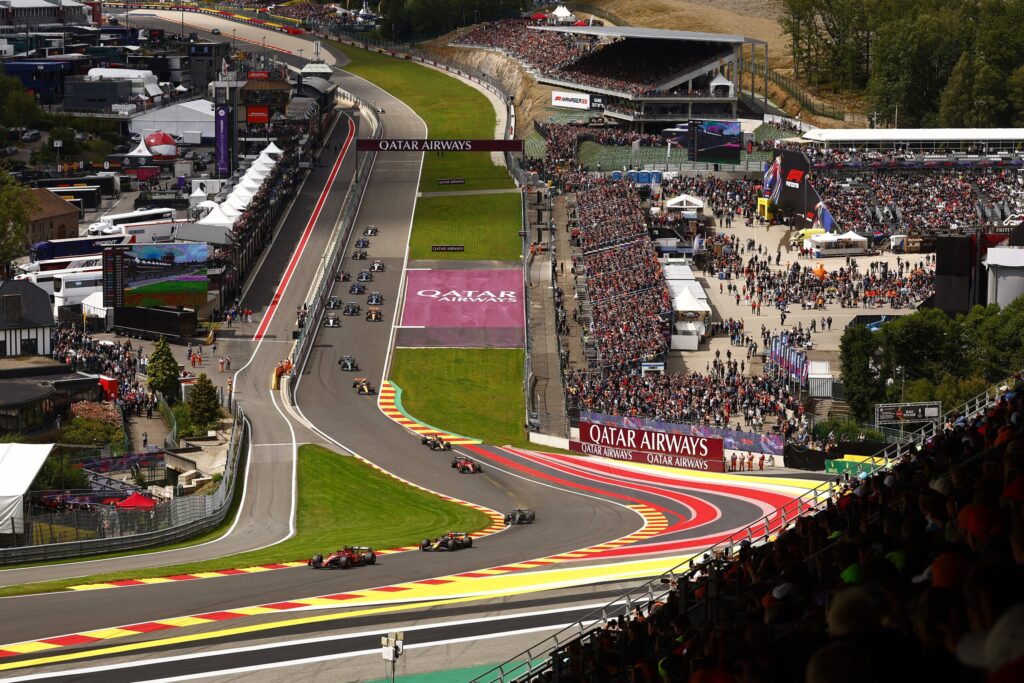
Audience
- Sentiment: optimistic
- Political Group: not specifically aligned
- Age Group: 18-35
- Gender: male
Overview
- Williams Racing is unveiling subtle design changes for their 2025 F1 car that could enhance performance.
- Key modifications include a reworked front wing, updated sidepod design, and pushrod rear suspension for improved stability.
- The driver lineup of Carlos Sainz and Alex Albon may lead to stronger teamwork and performance in the upcoming season.
Williams Racing’s 2025 Formula 1 Car: The Subtle Changes That Could Make a Big Difference
Formula 1 (F1) is one of the most exciting and fast-paced sports in the world, filled with high-speed cars zooming around tracks, incredible teamwork, and the thrill of competition. Every year, teams get together to design and build new cars that can help their drivers win more races. For the 2025 season, the Williams Racing team is unveiling their latest car, and while the differences might not seem like a lot at first glance, these subtle tweaks could have a huge impact on performance. Let’s dive into what makes the new Williams F1 car special and how it could potentially change the team’s fortunes on the track.
A Brief History of Williams Racing
First, let’s take a step back. Williams Racing is a legendary team in Formula 1 history. Founded in 1977, the team has had incredible highs, including multiple championships and famous drivers. However, in recent years, their performance has not been where fans expect it to be. The 2022 and 2023 seasons were particularly tough, with the team struggling to keep up with rivals. Yet, hope is on the horizon with the new 2025 car. Team principal James Vowles, along with the help of the 2009 F1 champion Jenson Button, are optimistic about the changes happening this season.
Understanding Downforce
So, what’s all the fuss about? Let’s start with a fundamental concept in F1: downforce. This is the force that pushes the car down onto the road, which helps it stay stable at high speeds and makes cornering smoother. More downforce usually means a faster car that can handle turns better. The Williams team is focusing on something called “driver-usable downforce,” which basically means they want to create downforce that the driver can easily control. If drivers can trust their car to handle well, they can push harder and ultimately go faster.
Key Changes in the 2025 Williams F1 Car
Now, let’s break down the key design changes Williams has made for the 2025 season:
- Reworked Front Wing: The front wing of a Formula 1 car is one of the most essential components for creating downforce. For 2025, Williams has made modifications to the front wing that will improve airflow consistency over the rest of the car. This is crucial because the way air flows over and around the car can make or break its performance. With a more efficient front wing, the car will cut through the air better, resulting in improved speed and stability during races.
- Updated Sidepod Design: The sidepods on an F1 car play a crucial role in managing airflow. The new design features changes aimed at enhancing flow dynamics, which could lead to better cooling of the car’s engine and aerodynamic advantages. In simpler terms, if the sidepods can move air more efficiently, the entire car can perform better, especially when racing against competitors.
- Pushrod Rear Suspension: Another significant change is the switch to a pushrod rear suspension system. This new setup can help improve the car’s stability, especially during braking. In racing, the way a car behaves when slowing down is incredibly important. If a car is stable under braking, the driver can maintain better control, allowing them to approach corners faster and more confidently.
Driver Dynamics
Another exciting aspect of the 2025 car is the driver lineup. Carlos Sainz has joined Alex Albon for the season ahead. Both drivers are talented and bring unique strengths to the team. Albon previously drove for Williams and showed promise during challenging races, and now with Sainz alongside him, there’s a strong possibility for the team to intertwine their skills for even better performance. Having a robust driver lineup could lead to enhanced teamwork and shared insights, which are critical in racing. It’s like playing on a sports team; the better you communicate and work together, the better your chances of success!
The Road to Improvement
While change is exciting, it’s essential to remember that the road to improvement isn’t always a straight line. Last season was particularly challenging for Williams, and the transition to a new car always comes with its bumps. However, the team’s leadership, including Vowles’ vision and Button’s experience, are guiding the crew toward building a solid foundation for future success.
It’s kind of like studying for a big exam. You might not see the benefits of your hard work right away, but as you practice and learn, you begin to see improvements in your grades and understanding of the subject. If Williams can utilize these subtle design changes wisely and if Sainz and Albon can leverage their driving skills effectively, the results could surprise us in the upcoming races.
Fan Engagement
As fans, we play a vital role in this journey. The excitement of following Williams Racing, cheering them on, and witnessing the evolution of their car brings us closer to the sport we love. Engaging with the team through social media, attending races, or even watching from home connects us as a community of F1 enthusiasts. It’s very much like supporting your favorite sports team; every cheer and shout adds to the atmosphere.
The 2025 season is not just a new chapter for Williams Racing; it’s a chance to rally together as fans, to become part of the story, and to support our drivers and team as they strive for success. It’s about hope, dreams, and excitement—an exhilarating adventure that unfolds with each race.
The Future Ahead
As we look forward to the 2025 season, it’s clear that Williams Racing is laying down the groundwork for success. The subtle design changes in their car, combined with a solid driver lineup, offer a glimmer of hope that they may turn their fortunes around. While the past few seasons have been tough, the new strategies and technologies could lead to competitive performances that inspire fans and build a brighter future for the team.
Over to You!
What are your thoughts on Williams Racing’s new F1 car? Do you think these subtle changes will lead to big improvements in performance? Are you excited to see how Sainz and Albon work together on the track? Share your opinions in the comments below! Let’s get the conversation going and see how we all feel about the upcoming season!




